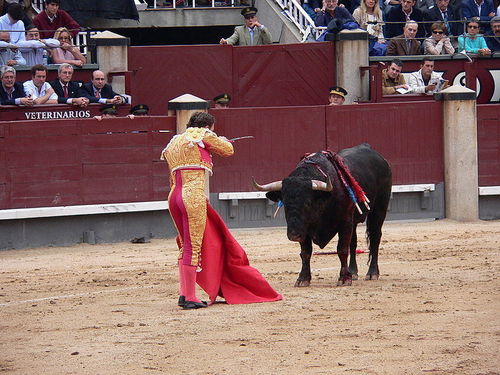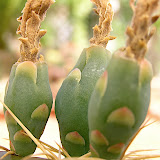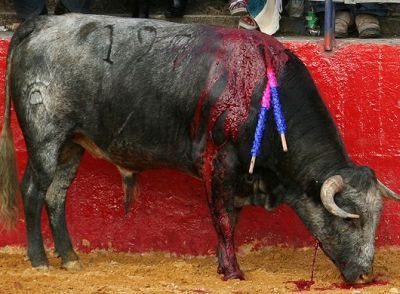
We have walked all the way down the Paseo Ingeniero Mira and have now arrived at the junction with the Avenida Europa, just before the beach. Across the junction, there is a small bar with a narrow, very short street that leads to the beach itself. Four years ago, at the end of August, 2006, I took the above photo of this location.
Little has changed since then, except for the sign that can be seen in the centre of the photograph.

A few weeks ago, I noticed that the sign had been removed: the donkey had disappeared; the mule was missing; in a word, dear reader, the 'orse 'ad 'opped it!

A few weeks ago, I noticed that the sign had been removed: the donkey had disappeared; the mule was missing; in a word, dear reader, the 'orse 'ad 'opped it!
Whether this was an official action, or the work of vandals, or even that of an over-zealous traffic-sign-collector, I am unable to say, but gone it was.
To be honest, I suspect that the disappearance is the work of officialdom: someone decided that there really was no more need for a sign prohibiting the entry of horse-drawn (or donkey-drawn, or mule-drawn) carts of the tumbril variety.
Anyway, the sign has gone, as, indeed, have such vehicles. We have been living here for four-and-a-half years now and have never seen a horse-drawn (or other quadruped-led) vehicle in anything but a festive environment, or as a means of enjoyment (a jingly-jangly horse-and-trap-like-affair occasionally passes the house of a Sunday), so perhaps there really is no need for such a sign any more.
Still, the loss of the sign is indicative of another part of old Spain that is disappearing, for better or for worse.
Still, the loss of the sign is indicative of another part of old Spain that is disappearing, for better or for worse.

































 The nine days of the San Fermin festivals in Pamplona have just come to an end. Basically, a long week of drunkenness, using an ancient "tradition" to justify such boorishness and the peculiar cruelty to bulls for which Spain should be ashamed.
The nine days of the San Fermin festivals in Pamplona have just come to an end. Basically, a long week of drunkenness, using an ancient "tradition" to justify such boorishness and the peculiar cruelty to bulls for which Spain should be ashamed.
